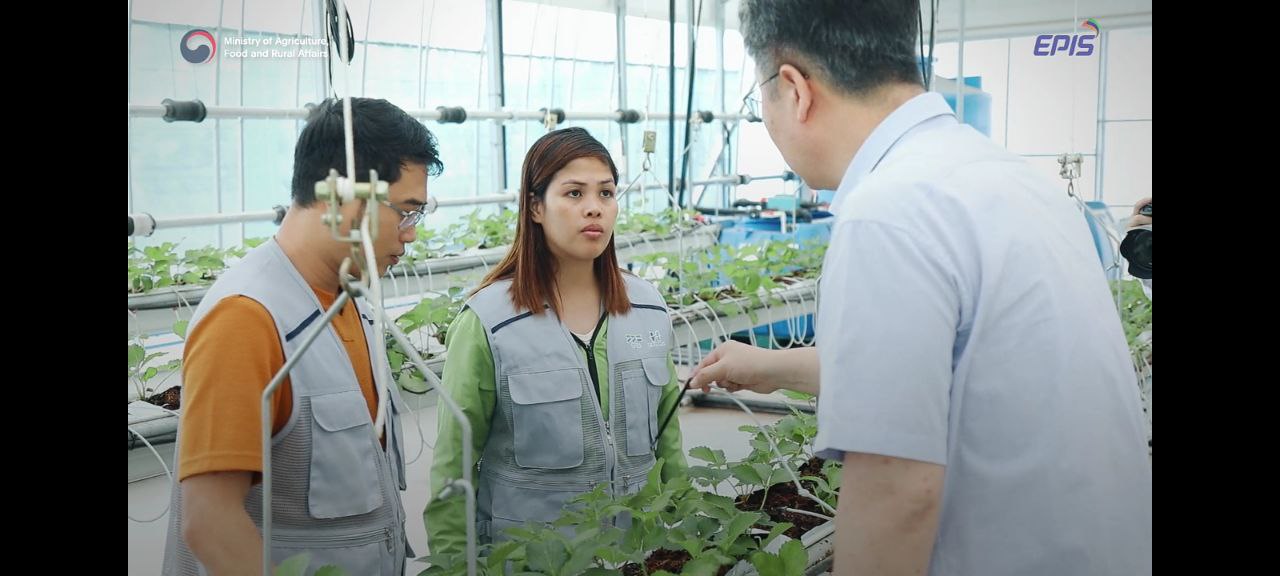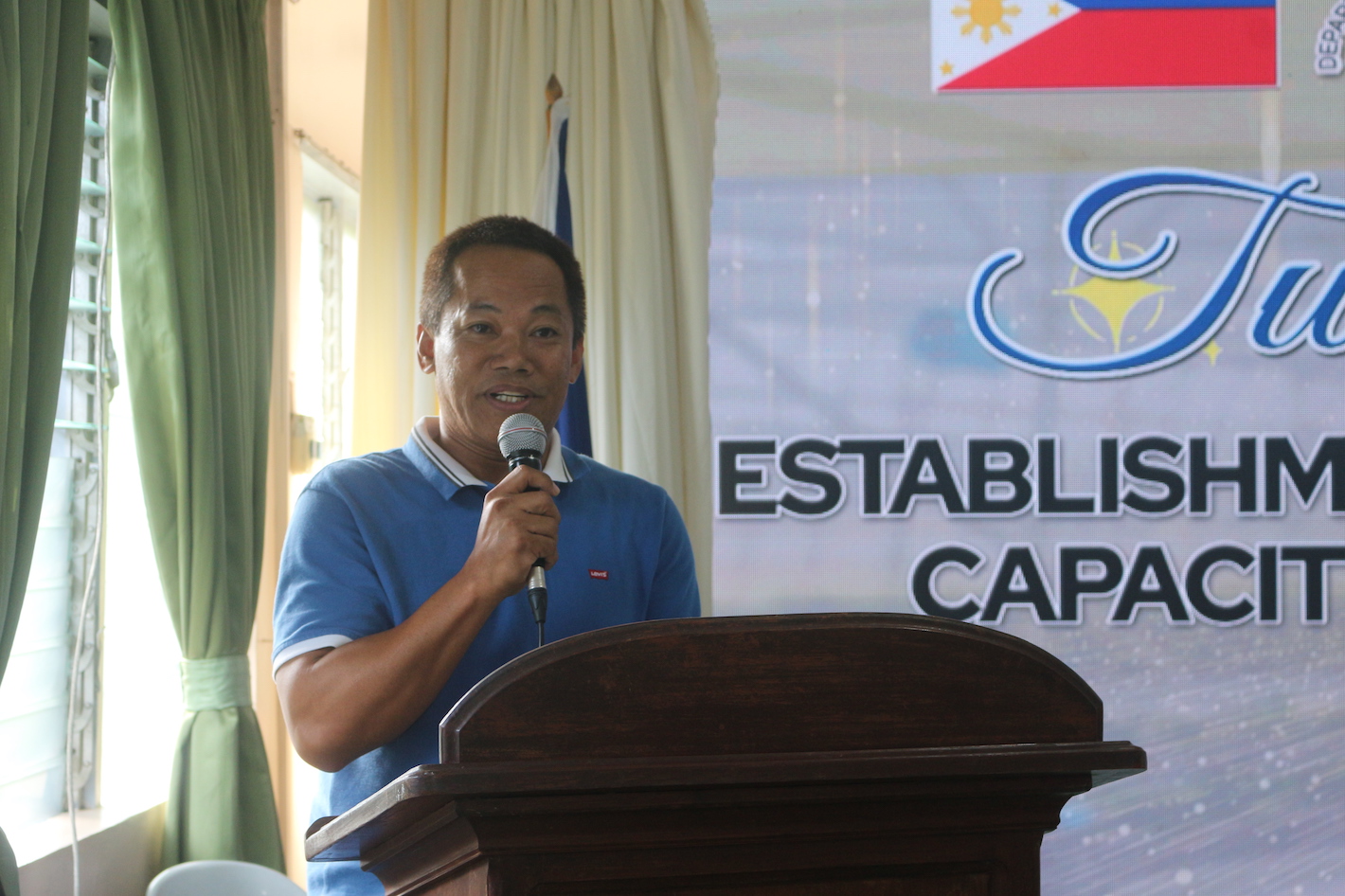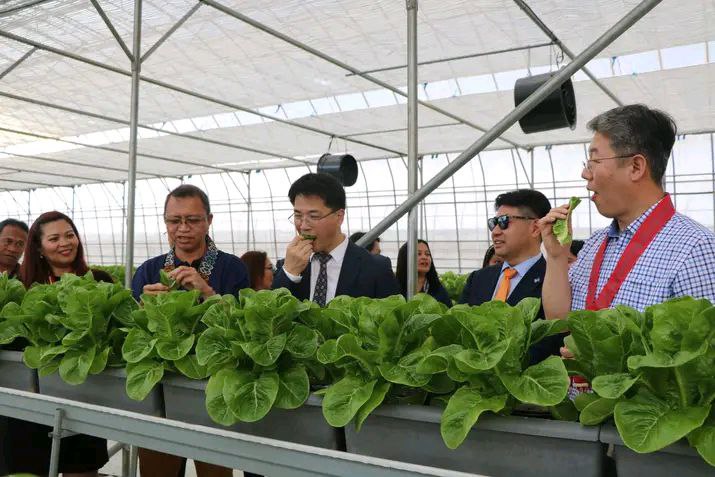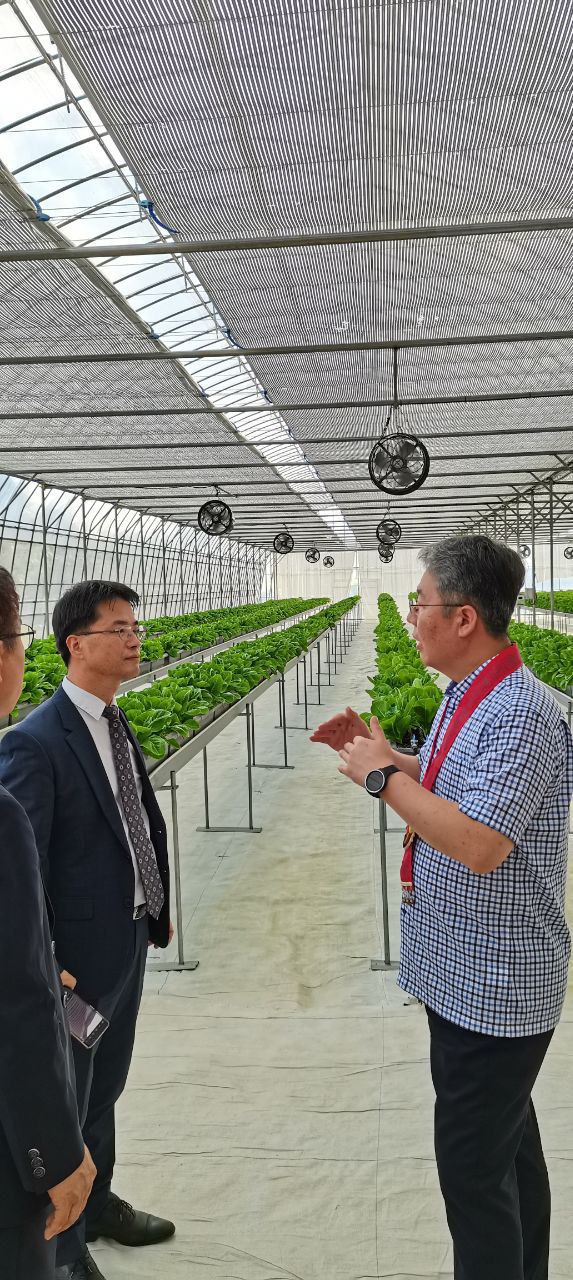MALAYBALAY CITY, Bukidnon (PIA)—The unveiling of P100 million Korean government greenhouse technology in Bukidnon marks a breakthrough in agriculture, sparks a bounty harvest, and improves farming techniques among the province's high-value crop farmers.
Packed with Korean tech, South Korea's Ministry of Agriculture, Food, and Rural Affairs (MAFRA) donated the multimillion greenhouses to the Department of Agriculture in Region 10 (DA-10) to demonstrate effective methods for growing strawberries, cherry tomatoes, potatoes, leafy vegetables, and high-priced crops in Philippine soil.
In a strawberry farm tour following the turnover ceremony at Northern Mindanao Agricultural Crops and Livestock Research Complex in Dalwangan, Malaybalay City, last December, An Jae-rok, executive director of the Korean Agency of Education, Promotion, and Information Service in Food, Agriculture, Forestry, and Fisheries presented how MAFRA's Smart farm system gives farmers remote control over their greenhouses.

Deok Hoon Yoon, a Hankyong National University professor in South Korea, explains to the trainees how technologies work inside and outside the greenhouse at the research center in Dalwangan, Malaybalay City. (Photo courtesy of Korean Agency for Education, Promotion, and Information Service)
"In Smart Greenhouse, data is collected daily inside and outside the facility. There are sensors inside to check the amount of carbon dioxide, temperature, and air humidity. There are also sensors outside the greenhouse to check the rainfall, temperature, wind direction, and velocity," he said.
Jae-rok said farmers need not worry anymore about the unpredictable weather and the backbreaking labor because farmers can easily monitor and adjust greenhouse conditions manually or remotely using the Smart Farm Mobile App with internet connectivity.
"This is unique. It gives us a chance to dream bigger, heaps of perfectly ripened strawberries at a time," said Joel Rivera, a greenhouse farm adopter and red bell pepper farmer from Bukidnon, as he looked at the vibrant plants inside the facility.
Compared to traditional methods, which usually rely on manual labor and simple controls, greenhouses use modern irrigation and automation systems such as complex environment control and growth development information.

Plump and juicy Sweet Charlie strawberries (left), uniformly ripened in a Korean-style greenhouse at Northern Mindanao Agricultural Crops and Livestock Research Complex in Dalwangan, Malaybalay City. No more uneven ripening like you get (right image) with traditional methods. (Photo: PIA 10/Bukidnon)
Finding new ways to produce more food
Cora Dumayaca, technical director for research and regulations for DA-Northern Mindanao, said the newly introduced greenhouse technology aims to provide innovative planting to increase productivity and ensure higher profits for Filipino farmers.
"It's not just technology. It's empowerment. This high-tech farming also combats climate change worries. Imagine vibrant strawberries thriving alongside climate-resistant leafy greens–that's the future the government is building," Dumayaca said.
She explained that Northern Mindanao's agriculture department shared nearly 30 percent, while Korea's MAFRA granted more than 70 percent of the project's total cost.

Joel Rivera, trainee and adopter of Smart Greenhouse, shares his experience using Korean-style farming and how it helps him and his community. (Photo: JSA/PIA 10/Bukidnon)
Dumayaca reported that they had trained 70 Bukidnon farmers, extensionists, and other farmer organizations in nearby provinces on sustainable smart agriculture covering strawberries, cherry tomatoes, leafy vegetables, and potatoes.
"The project went beyond equipping 11 greenhouses with advanced technology. These serve as training hubs and show windows, crafting a Package of Technology (POT) as a roadmap for farmers to boost production through precision agriculture. The DA aims to inspire the next generation to adopt modern farming methods," she added.
Yong Ho Jung, Korea's director for international cooperation of MAFRA, said that by establishing smart farms in the Philippines, they have transferred proven Korean-style farm technologies adaptive to the Philippine climate.

DA Northern Mindanao Regional Director Carlene Collado (left) and Korean government officials getting a taste of Malaybalay's fresh, crisp Xanadu lettuce they picked right off the plants inside the Smart greenhouse at the research center in Dalwangan, Malaybalay City. (Photo courtesy of DA-RFO 10))
"I thanked the Philippine government for its cooperation and interest in the project. These greenhouses mark MAFRA's first Official Development Assistance (ODA) program on smart agriculture—a testament to the enduring friendship between the two countries. We hope that our collaboration in agri-technology will help to modernize and develop the agro-industry sector through knowledge exchange, as outlined in the Philippine Development Plan 2023-2028, as well as the nationwide dissemination of smart farming in the Philippines," Jung said.
Korea's Smart Greenhouses at NMACLRC in Dalwangan, Malaybalay, was launched on April 1, 2022, with 11 state-of-the-art greenhouses across 4,250 square meter fields. Inside, rows of fruit-bearing strawberries and cherry tomatoes, including vibrant leafy greens and potatoes, flourish in precision-designed gardens.
With the ability to produce off-season crops year-round, the DA considers the project a step towards achieving self-sufficiency for the country. (JSA/RLRB/PIA 10/Bukidnon)

South Korea's Ministry of Agriculture, Food, and Rural Affairs (MAFRA) officials visit the P100 million Korean-style Smart Greenhouse at the Northern Mindanao Agricultural Crops and Livestock Research Complex in Dalwangan, Malaybalay City. (Photo: JBA/PIA 10/Bukidnon)

